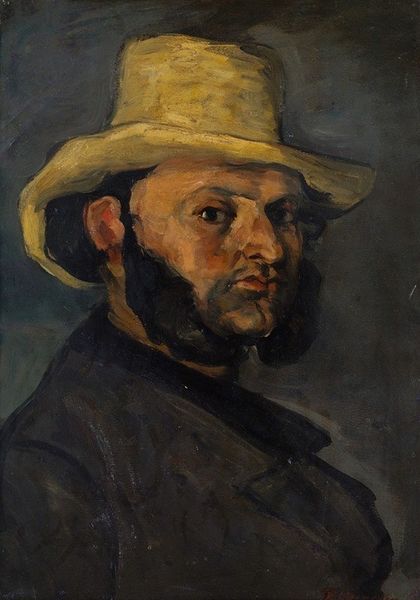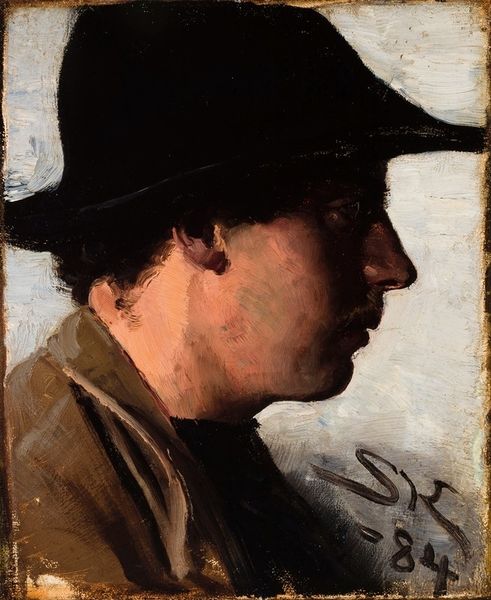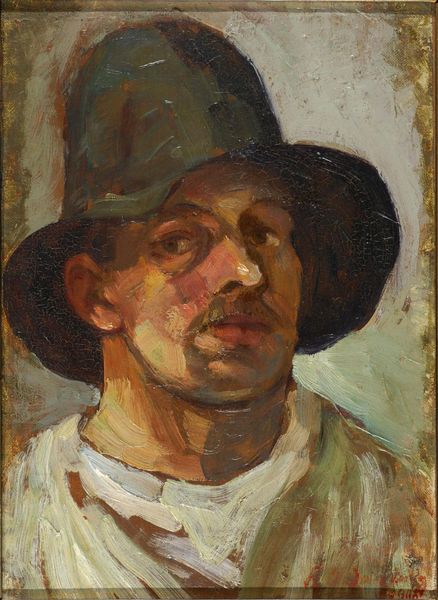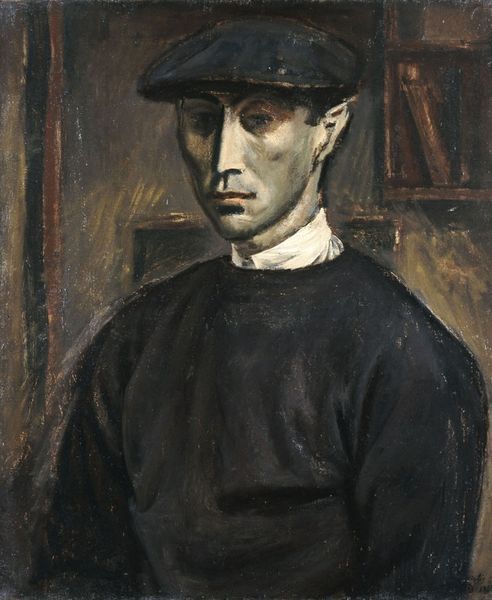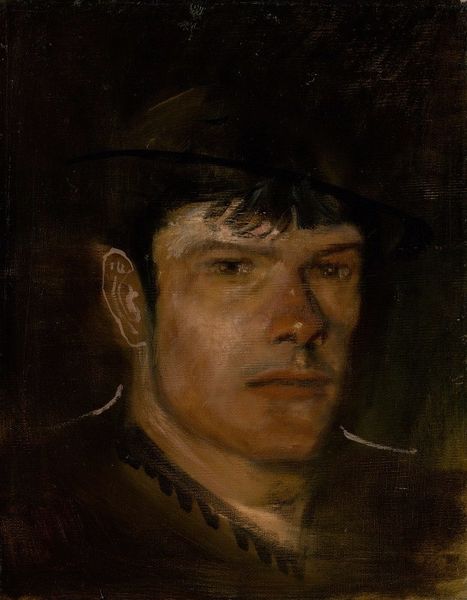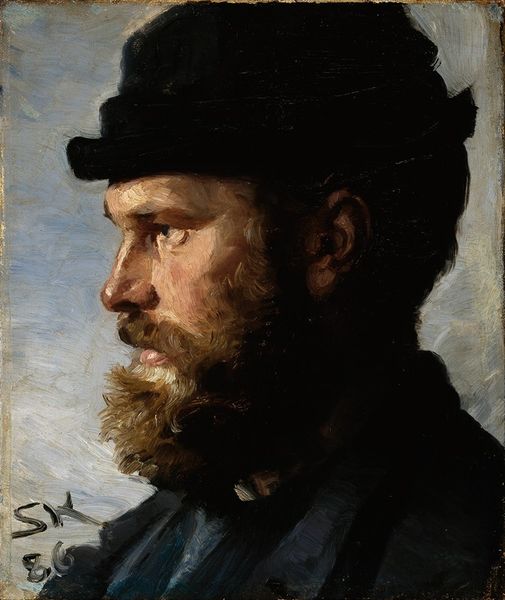
Copyright: Public Domain: Artvee
Ladislav Mednyánszky painted this portrait of a worker in oil paint, sometime between 1852 and 1919. It’s a striking image, not least because it elevates someone from the working class to the status of art. Consider the time and place. Mednyánszky lived in Austria-Hungary, a society undergoing rapid industrialization. The traditional social order was challenged by new class divisions and political movements like socialism. The artist, who had aristocratic roots, often depicted the lives of marginalized people. In doing so, he was questioning the traditional subjects of art and commenting on the social changes happening around him. The “worker” isn’t idealized. The portrait emphasizes the dignity and humanity of its subject, and it resonates with the rising social consciousness of the time. To better understand this artwork, we can research the social history of Austria-Hungary, and the history of art institutions, as well as the cultural norms that shaped Mednyánszky's artistic choices. It is through this contextualization that we truly understand the artwork’s statement about the society in which it was made.
Comments
No comments
Be the first to comment and join the conversation on the ultimate creative platform.

